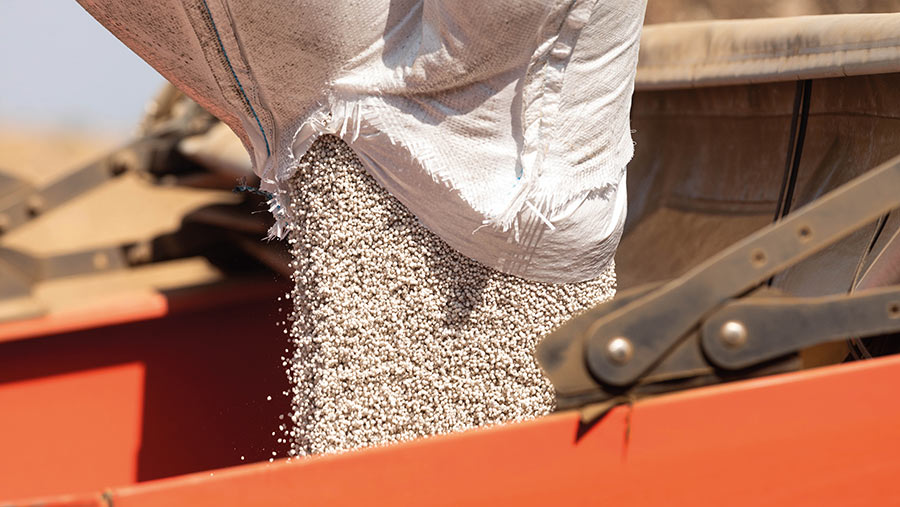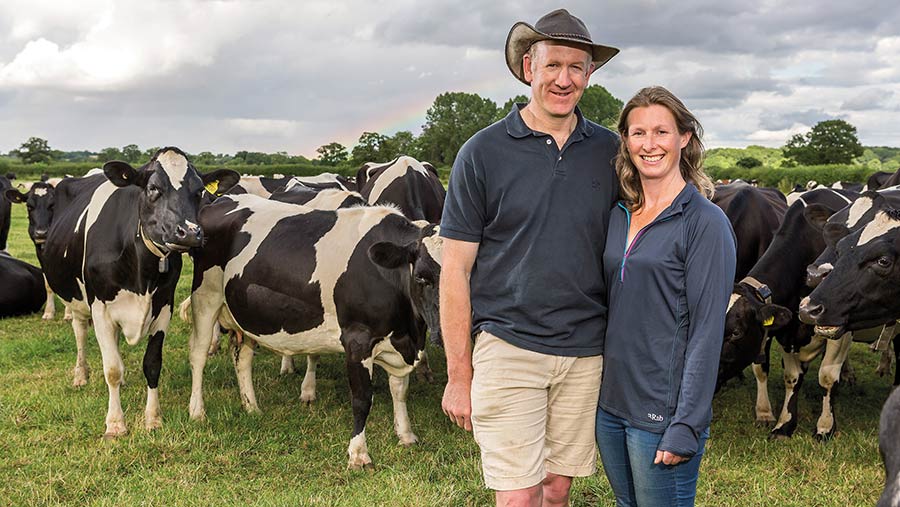How regen practices can help cut inputs for livestock farmers
 © Tim Scrivener
© Tim Scrivener
Regenerative farming can present an opportunity for dairy and mixed farms to lower production costs and greenhouse gases by reducing reliance on synthetic fertiliser and supplementary feed.
Stephanie Race, founder and chief executive officer of Earth Labs, an analytics company that identifies solutions to climate change says: “Farmers who grow more grass forage as feed and leverage manure, legumes, cover crops, and organic amendments to improve soil health and fertility can overcome dependencies on high-cost inputs.”
See also: 5 ways to cut nitrogen use on grazing ground
We look at how farmers can cut their synthetic nitrogen use and we find out how a dairy farm in Shropshire has seen the benefits of moving to a regenerative system.
Tips to reduce nitrogen
Regenerative agricultural consultant Niels Corfield believes high-output farmers can lower their carbon footprint by reducing their reliance on nitrogen and lower-input farmers can “go the whole hog” and remove it completely.
Regenerative farming can present an opportunity for dairy and mixed farms to lower production costs and greenhouse gases by reducing reliance on synthetic fertiliser and supplementary feed.
Below, Niels Corfield offers tips for starting this journey.
1. Do not apply N on its own
Apply nitrogen with a carbon source (at 3-5% volume) such as fulvic or humic acids. This will help stabilise the nitrogen and reduce volatilisation and leaching.
Nitrogen binds to carbon, which will give it a higher residency time. Evidence suggests carbon can also improve uptake by up to 30%. This is not only good for the environment but your pocket, too.
It also helps with nitrogen availability because it increases cell wall permeability.
2. Apply it to the leaf
Foliar application rates are lower, but efficiency can be up to 10 times higher by applying product directly to the leaf.
Avoiding soil contact also protects the soil microbes from exposure to synthetic fertilisers.
3. Identify what is needed
Overapplying fertiliser is not only a waste of money, but it creates unhealthy plants by creating deficiencies in other nutrients such as potassium and calcium.
Carry out sap or leaf tests to identify whether nitrogen is needed or if minerals such as calcium or magnesium are the limiting factor.
Only apply nitrogen at the plant growth stages where it is most needed.
4. Ferment slurry and compost muck
Raw slurry contains a lot of available nitrogen which readily leaches and kills earthworms. Fermenting it converts nitrogen to a more stable form, which is still available to the crop but is much less volatile.
Meanwhile, improving farmyard manure through bokashi composting (anaerobic decomposition) releases almost no carbon to the atmosphere and is an excellent source of organic matter for the soil.
Stephanie Race, founder and chief executive officer of Earth Labs, and regenerative agricultural consultant Niels Corfield were speaking at Down to Earth, the RABDF’s new regen event in Shropshire. Information from Jude Capper, livestock sustainability consultant, who was also speaking at the event, was used to write this article.
Case study: Tim and Louise Downes, The Farm, Longnor, Shropshire

Tim and Louise Downes © Richard Stanton
Farm facts
- Milks 300 cross-bred cows
- Spring-calving
- 360ha (890 acres)
- Produces 6,500 litres at 4.04% fat and 3.5% protein
- Milk supplied to Organic Milk Suppliers Co-operative
- Finishing 250 Angus cattle for Dovecote/Waitrose
Tim and Louise Downes credit regenerative farming practices with helping improve biodiversity and reducing inputs while growing productivity on their organic dairy.
Spring-calving cows are yielding 6,500 litres from just 750kg of concentrate a cow a year.
Furthermore, grass yields have climbed to 15t/ha across the farm’s 129ha (319-acre) grazing platform by fermenting muck to make bokashi compost and using herbal leys to improve soil and grassland health.
Fermenting muck
When cattle are housed during the winter, microbes are applied to straw-bedded yards using a small jet attached to the straw bedder.
The muck is then stacked and sheeted, where it undergoes anaerobic fermentation.
The compost is applied the following spring, mostly to silage fields, but also to some grass paddocks, at 10t/ha.
As well as improving soil health, which has been quantified by a higher earthworm count and the presence of dung beetles, fermenting muck is having a positive effect on cow health in other ways.
“The bedding is now drier, and it reduces the chance of cows picking up nasty E coli bugs because you’re increasing good bugs,” explains Mr Downes.
Herbal leys and reseeding
Fields are overseeded rather than ploughed to prevent carbon from being released.
Herbal mixes comprising deep-rooting chicory, clovers, plantain and hybrid ryegrasses have proved invaluable in the driest summers.
Biological fertiliser in liquid form is applied at 50 litres/ha to the grazing fields in March.
This includes essential minerals and gibberellic acid, a natural plant-growth hormone that helps stimulate grass growth.
Since using this product, forage analysis results show mineral content has improved, explains Mr Downes.
Performance
All this is contributing to better cow health – only one cow out of 300 has been treated with antibiotics so far this season.
Beef growth rates have also improved, with heifers now finishing at 18 months at 500kg off grass, and steers weighing 600kg before 24 months.
Mr Downes thinks farming in the UK has a bright future.
“People have to eat, we are producing high-quality, nutrient-dense food and we have a huge opportunity to displace imports.”
